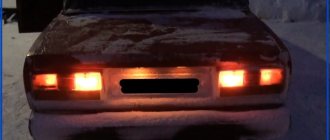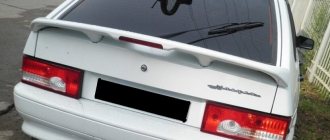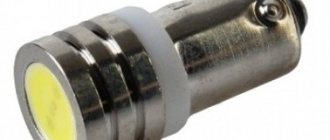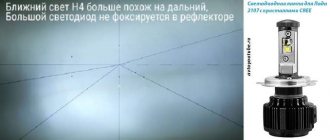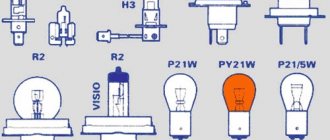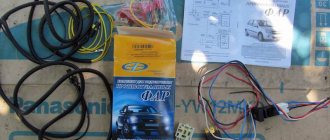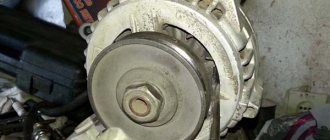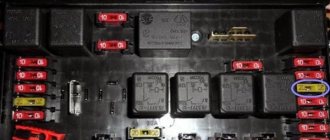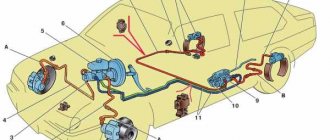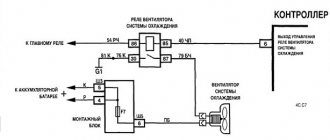Diagram of wires in chips, rear lights VAZ 2114(08-09-99)-2115
maybe it will be useful to someone. The 4 has the same lights as the VAZ 2108-09-99
Comments 19
I should install this wiring at 21099
Well, you can, take the pinout from the pictures and select it. Everything will be according to color and standards. Just seal the extra wires.
hi, tell me under 1, are these chips also for the lights?
Honestly, I don’t even know, there should be a tag with a number on the wiring, put this number in a search engine and find the diagram, look at the diagram for which wire is responsible for what.
I have a turn from 15 to 14 chips
Everything is in the pictures, take the wires out of the chip and pick them up
I have new chips over them, my contacts are rotten
Well, look, you can’t convert 14k chips into 15k chips since there are 4 of them on 15k. If only to farm
The driver should have a chip under his left foot, and it goes from there to the block.
what color plus rear dimensions? I want to make a light in the trunk
Source
Car modifications 2114
VAZ-21140 . Modification with an 8-valve injection engine VAZ-2111, 1.5 liters and 77 horsepower. Serial production from 2003 to 2007
VAZ-21144 . Modification with an 8-valve VAZ-21114 engine, 1.6 liters and 81.6 horsepower. Years of serial production: 2007-2013.
VAZ-211440 . Another modification released in 2007, it was equipped with a VAZ-11183 engine with a volume of 1.6 liters and a power of 82 horsepower. The car was discontinued in 2013.
Schemes 2113, 2114, 2115
Electrical diagrams of the Samara 2 family with comments. Some diagrams are taken from the website chipdiagnost.ru
General diagram of the first VAZ-2115
with a regular button for the rear fog lights (with fixation), a fluorescent interior light, a connector for the clock and an 8-pin connector for the injector wiring content-23.foto.my.mail.r…hofer2107/3833/s-3852.jpg The harness is visible carburetor ignition system with a speed sensor; it is not connected to the injector. The 4th wire of the interior lamp is the ignition, so that when the ignition is turned on, the backlight goes out immediately. Peerarm on Ш11 for wipers. On 2109 they are powered through a fuse on the motor (6-pin), here it is not used and therefore there are 5 wires going to the motor.
Years of production 2115: 1997—2012.
Circuit 2115 with “high” panel 21083 is similar to circuit 21099 (except for the rear harness).
General diagram of the VAZ-2115 luxury configuration
with headlight cleaners, heated seats, power windows, central locking, trip computer and fluorescent interior lighting content-5.foto.my.mail.ru…hofer2107/3833/s-3853.jpg
Explanations for the 8-pin injector block:
white-red and blue - for the check light, blue-red - ignition, gray - speed sensor, brown-red - tachometer, blue-white - driver's door switch (for the immobilizer), green-red - K-line (may not be ), green - fuel consumption. Next to it is a pink wire - to the fuel level sensor.
Years of production 2114: 2001—2013
Schemes of individual wiring harnesses of VAZ-2113, VAZ-2114 and VAZ-2115
With a 9-pin square block for the injector, a non-locking button for turning on the automatic transmission, and a starter blocking relay (the injector turns off the starter if the engine is running).
Instrument panel harness
content-20.foto.my.mail.r…hofer2107/3833/s-3834.jpg In the photo there is a relay for the rear fog lights (attached next to the mounting block, the fuse dangles nearby), a button without locking. It works like this: if the low beam and/or front fog lights (if equipped) are on, press and release the button - the automatic transmissions turn on. They turn off when the button is pressed again or automatically when the headlights are turned off, so that the driver does not forget to turn them off.
Glove compartment lighting harness
content-12.foto.my.mail.r…hofer2107/3833/s-3840.jpg There is a magnet on the lid; when it is far from the sensor with the reed switch, the glove compartment light turns on (the reed switch closes the contacts).
Rear harness VAZ-2114
content-18.foto.my.mail.r…hofer2107/3833/s-3842.jpg Rear window wiper motor with pause. When the washer is turned on, it runs continuously.
Additional harness (central locking)
content-20.foto.my.mail.r…hofer2107/3833/s-3835.jpg Connects to the instrument panel, connector next to the hood handle. Pink - door lock, permanent plus, fuse hangs next to the hood release handle. White and black - on the door for electric windows, plus during ignition, switched on through a relay and fuse in the mounting block. Also in the photo is the wiring for the radio speakers.
Seat heating harness
content-1.foto.my.mail.ru…hofer2107/3833/s-3838.jpg The gray wire is connected to the connector where the additional harness is connected (to the gray wire if there is one), plus when igniting, the relay is attached next to the mounting block and The fuse is located next to the hood handle. The white wire is connected to the additional harness, button illumination.
Connection diagram of the mounting block (relay No. 1 - headlight cleaners)
content-10.foto.my.mail.r…ofer2107/3833/s-3851.jpeg In the photo the typo X2-11 is connected to X9-5 (and it says X5-9)
Explanations for the 9-pin injector block:
1 gray - speed sensor, 2 white-red - minus check lights, 3 green - fuel consumption, 4 blue-white - driver's door switch, 5 brown-red - tachometer, 6 pink-black - plus check lights and starter interlock relay, 7 red-black - starter blocking (if there is no minus, the starter circuit is broken), 8 blue-red - ignition, 9 pink - fuel level.
Years of production 2113: 2004—2013
Diagrams of cars from 2011 with an electronic gas pedal (E-GAZ)
The injector comes with a large multi-pin block. Ignition switch from Kalina.
Luxury instrument panel harness (heated seats and seat belt sensor)
content-5.foto.my.mail.ru…hofer2107/3833/s-3864.jpg content-19.foto.my.mail.r…hofer2107/3833/s-3865.jpg The seat heating relay and fuse are located next to mounting block.
Connection diagram of the mounting block (relay No. 1 - fan)
There is a typo in the photo: in relay K1, contact 86 goes to Ш3/8 (and not to Ш8/3). content-12.foto.my.mail.r…hofer2107/3833/s-3843.jpg Briefly about the changes compared to the previous block: relay 1 turns on the engine fan, control goes to the cabin, and from there to the injector. Fuse 1 provides constant power to the electrical package control unit. The headlight wiper chain is made directly.
The rest of the circuits are used as before (rear, doors, heated seats...) Except for the wiring harness of the air supply box. It is used the same, only a jumper is installed on pins 6 and 12 of plug 11 of the mounting block (due to a different connection of the oil pressure warning lamp sensor).
Explanations for the 16-pin injector block:
2 red - battery (on APS), 3 blue-red - ignition, 4 pink-black (plus check lights, starter and engine fan blocking relay in the ChYa), 5 yellow-black - K-line, 6 gray - speed sensor, 7 white-red - minus check lights, 8 pink-red - brake lights, 9 brown-red - tachometer, 10 orange-blue - communication between APS and ECM, 11 red-green - brake pedal sensor, 12 blue-black - diagnostic block from the APS, 13 black-red - minus the engine fan relay in the CYA, 14 pink - fuel level, 16 red-black - minus the starter interlock relay.
And briefly about the changes in the E-gas wiring: The glass heating button is connected to the devices (and not to the stove). The oil pressure light is connected a little differently. In the FC, the engine fan relay is controlled by the ECM (contacts are used that on blocks with 11 relays go to light and dimensions). Ignition switch with a coil (immobilizer sensor), without limit switch and backlight, and the ignition switch works only from the ignition. The ESP relay is connected to the APS (switch-off delay after the ignition is turned off) so that the driver has time to close the windows. APS is an immobilizer, a warning about not turning off the dimensions and turning on the reverse gear, a relay, a door lock block, and somehow it’s all powered from fuse 1 of the mounting block (20 Amperes) to which it is connected in the cabin with a small terminal (Ш3/21), rated at 10 Amperes. But the heavy load occurs only briefly when unlocking/locking the door locks, so everything is fine. A sensor on the brake pedal with two open (to the lights as before) and closed (to the ECM) contacts (when the pedal presses on the sensor), a different connector, there is constant power and ignition, and when the sensor fails (and this is not uncommon ), unnecessary contacts close and the ignition starts working constantly or by pressing the pedal)))))
Photo of what “S” (wire connection) looks like using the driver’s door harness as an example
Source
We repair damage to the front and rear side lights on a VAZ 2114
Any car, according to today's standards of traffic regulations, must be equipped with a certain set of lights of various colors and sizes. This includes brake lights, low beam and high beam headlights. But the dimensions of the VAZ 2114 are of most interest:
- Front right and left;
- Likewise the rear ones.
Rear marker lights
Engineers positioned them so that they can be seen from any side, that is, from each side of the car. Their purpose is to notify drivers about the presence of a car in a particular place with constantly burning yellow lights. In addition, side lights must be turned on along with low beam headlights when driving according to today's traffic rules. Accordingly, their absence entails the imposition of a fine, so it is necessary to monitor the condition of the dimensions regularly, and repair breakdowns in a timely manner. Let's figure out why the dimensions of the VAZ 2114 do not work and how this issue can be resolved in any case.
Connection diagram
Before troubleshooting, you need to get acquainted with the electrical circuit of their power supply. Let's take a look at the diagram for switching on external lighting devices.
We are interested in:
How it works? When button 6 is turned on, the on-board power supply voltage is supplied to the mounting block. Having passed through fuses F10 and F11, it goes to the control relay K4. Fuses are necessary to protect the power circuits of the left (F10) and right (F11) side dimensions.
The relay controls the correct operation of the side light - if any of the lamps or its circuits malfunctions, it commands the on-board control system 12 to turn on the warning light located on the instrument panel. Having passed through the relay, the voltage is supplied to the side lamps 1 and 8.
Important! In some modifications of the VAZ 2114, instead of the K4 relay, there may be jumpers in the mounting block. Their location in the diagram above is indicated by arrows.
CIRCUIT BREAKERS
To protect against voltage surges and other influences on the electrical component, a side light fuse is also included in the circuit along with the light bulbs and the button. At the moment of overvoltage, it burns out, but due to this everything else in the circuit remains intact. It is usually located in the engine compartment, where in the VAZ 2114 there is a place for a whole fuse block for all electrical networks in the car.
Since all of them have markings, we can easily find the parts that we need: F10 is responsible for the safety of the lamps on the left side of the car, and F11 for the right. Thus, in the event of a failure of one half, for example, when the rear left indicator does not light up, the right side of the car will remain operational and will do its job. And if the size fuse blows, then replacing it is, in principle, quite simple - this is considered the simplest malfunction of this kind.
Diagram and location of fuses on the VAZ 2114 (also on 2113 and 2115)
Main causes of malfunctions
Why might the tail light not work? There are quite a few reasons, but we will list them all:
The most common malfunction of the above, of course, is the failure of the side light bulb. In this case, it is enough to replace it. How to do it?
How to change tail light bulbs
Replacing lamps in the rear light of a VAZ 2114 is extremely simple and does not require any tools. We open the trunk lid and opposite the lantern we find this pocket on the upholstery.
Pocket covering the rear light of a VAZ 2114
It's on Velcro. Just pull the edge and open it. In front of us is the back of the flashlight and the power supply.
Carefully remove the block by simply pulling it out.
There are three latches on the lantern: on the top, bottom and side.
We press them out and take out the board.
Place the board face up. The side light bulb is the smallest, marked with an arrow in the photo below.
Slightly recess the lamp, turn it counterclockwise and pull it out of the socket. We install a new one in place of the burnt one, mount the board in place, connect the power supply, and close the pocket in the upholstery.
After replacing the lamp, the side lights do not light up - we are looking for the required fuse
The next fairly common reason that the dimensions of the VAZ 2114 do not work is the failure of the fuse. But before we go to check it, let’s think logically.
Let's look at the circuit diagram (the very first drawing in the article). If fuse F10 burns, the front and rear left side lights, the engine compartment lamp, the instrument panel and license plate lights will not light up. If fuse F11 burns, the starboard front and rear lights will go out at once.
But suppose we have the picture described above. Where to look for fuses? They are located in the mounting block, and the block itself is located in the engine compartment immediately behind the windshield on the driver’s side. In the photo below it is marked with a black arrow.
We open the cover and observe a number of fuses (inserts) and relays. They are all marked, so finding the ones you need won't be difficult. As we remember, we need F10 (left side) and F11 (right side), both rated at 7.5 A.
Opened mounting block with fuses VAZ 2114
Important! We replace the blown fuse with a serviceable one of the same rating. If the value is less, the insert will burn out immediately. If it is more, the insert will not perform its functions and the wiring will burn out if there is a malfunction.
If the fuse is good, what should I do?
But why don’t the lights on the VAZ 2114 light up, even if the lamps and fuses are working? As we found out before, there are quite a few reasons. We will try to find the problem and fix it ourselves.
Let's check the condition of the pads on the lantern and the mounting block. Let's start with the lantern. We disassemble it in the same way as to replace a light bulb (see section “How to change tail light bulbs”). We inspect the block and its counterpart on the board. The contacts must be clean and free of dirt, moisture or oxidation. If it's not in order, we clean it. At the same time, we inspect the socket contacts by removing the lamp: we look for the same thing and, if we find it, we fix it.
Now the mounting block. In order to get to its pads, the device will have to be dismantled, but this is not a difficult task. Remove the cover from the block and disconnect the upper block.
Removing the cover and disconnecting the connector (in the photo there is a VAZ 2109 mounting block with a similar fastening)
Using a 10mm wrench, unscrew the two fixing nuts.
Carefully lift the module and gain access to the pads.
Now the power supplies can be removed and inspected
According to the schematic diagram (figure above), we are interested in the X4 (Ш4) and Х9 (Ш9) pads. They are located as follows:
Location of the pads on the mounting block of the VAZ 2114 car
We inspect and clean if necessary. At the same time, we inspect the rest so that there are no problems in the future. The most convenient way is to pull them all out - this way it’s easier to inspect their mating parts on the mounting block, which you can pick up and take to the light.
The next possible malfunction: the button responsible for turning on the side lights does not work. To check this button, it must be dismantled. You don't need any tools for this. Under the buttons (the side light switch is paired with the low beam switch) there is a decorative panel. We remove it with our bare hands, simply by prying the edges with our nails.
Removing the decorative panel
If on our modification of the VAZ 2114 there is an on-board computer behind the panel, then we remove it too: simply pull it out, turn off the power supply and take it out. Now we put our fingers under the panel, push out the buttons and take them out.
Removed button block
Remove the power supply. Now the button can be ringed with a regular tester set to resistance measurement mode. We will call contacts 1 and 2. They are marked, but to be sure, let’s check the photo, in which the necessary contacts are marked with arrows.
In one position of the button, the device will show zero resistance (when the button is pressed - in the “ON” position), in the other - infinitely large (when the button is in the “OFF” position). If you use an electrician’s tester (sound or light test), then in the “ON” button position the test ring will work (beep or light up), and in the “OFF” position nothing will happen.
Important! Power to the parking light button is supplied directly from the on-board network without any fuses. The slightest carelessness and you will have to replace the burnt-out wiring. Therefore, before such manipulations, it is better to disconnect one of the battery terminals.
Well, the last thing we can do is to carefully examine the harness leading from the mounting block (X9 block) to the rear light. When inspecting the harness, do not forget that the yellow wire is responsible for the rear marker lights on the right side, and the yellow-black wire is responsible for the lights on the left side. During inspection, we pay special attention to the places where the harness passes through the body and its ribs.
It is worth paying special attention to such transition places
If this does not help, then either we did not inspect the harness properly, or the problem is in the mounting block. The only thing that can be done here, without having electrical knowledge, is to try to temporarily replace relay K4. It is installed in a mounting block, its full name is Lamp Health Monitoring Relay (RLL), you should rent it from a friend and look at the result. It worked - we buy a new one, and the problem is solved. If it didn’t work out, you’ll have to contact a specialist or just an electrician you know (not necessarily a car).
So we have sorted out the possible problems with the rear side lights on the VAZ 2114. Let's hope that the knowledge gained will help you solve a similar problem yourself and without going to a car service center.
Source
How to check the functionality of the frog?
The contacts from the sensor are removed and clamped together, after which the ignition is turned on. If there is light, then you need to replace the sensor. And if not, then the problem is in the circuit, but the frog is fine.
When the reverse lamp does not light up, it is often necessary to replace the old sensor with a new one.
What should be done:
- place the car on the overpass;
- install the handbrake;
- remove protection;
- remove the contacts of the old sensor;
- place the container and remove the frog;
- Unscrew the faulty device and replace it with a new one.
Then let it sit for a while and check the oil in the gearbox. Fill it up to the required level and put the entire structure back together.
Attention, the price of a new sensor is within 250 rubles. The next option, if the reverse light does not light up on a VAZ 2114, then the problem is in the light bulb
To replace it, you need to disconnect the wire block, remove the plastic contact panel from the flashlight, while squeezing the side fixing elements
The next option is if the reverse light does not light up on a VAZ 2114, then the problem is in the light bulb. To replace it, you need to disconnect the wiring block, remove the plastic contact panel from the flashlight, while squeezing the side fixing elements.
We rotate the light bulb counterclockwise and, pressing slightly on the socket, remove it. Now we install a new one, check the contacts and put the entire unit back together.
We visually assess the condition of the wiring; if necessary, we strip the wires, check for breaks using the ringing method, and check the contacts on the headlight film.
Why aren't the reverse lights on yet?
A blown fuse is a common cause, which means you need to know exactly where they are located and how they change.
The products are located in the fuse box, which can be found under the steering wheel on the left side. It can be easily removed with just one touch of your hand. There is no need to unscrew anything.
When the reverse light does not light, you need to check the condition of the fuses. How to do this? You can visually look at the fuses and determine the breakdown - the integrity of the middle part.
But the burnt jumper is not always so clearly visible, so you need to turn on the dimensions and, without removing the fuses, check the voltage; if one end is lit and the other is not, the device is faulty.
Attention: when such a breakdown often occurs, you need to check the entire electrical wiring system, which causes such malfunctions in the car. To replace the product, you don’t need tools, just take tweezers, remove the old unit and install a working one
To replace the product, you don’t need tools, just take tweezers, remove the old unit and install a working one.
Key conclusions and recommendations from professionals
You can find out where the VAZ 2114 reverse sensor is located very simply by looking up at the gearbox, and if the driver cannot get under the car, then the hood opens and thus the condition of the frog is checked.
To completely verify that the brake gearbox is damaged, you need to turn the wheels to the left and look at the gearbox from the driver’s side. There is a protection with contacts inside on the side, remove it, close the contacts on the DZH and turn on the ignition. When everything is in order, a white light appears.
If not, then use a tester to measure the voltage on ground and on the orange wire that comes from the frog. If voltage is present, then we check the flashlight board itself and clean the contacts.
There is also a chance that the contact between the frog and the fuse block has “frozen”; you need to find it and check its condition.
Attention: when everything is normal, but the lights do not light, the reason may be the contact of the lamp, so even when screwing in a new one, you must check its functionality. As the people say, the devil never jokes, because a breakdown can be the easiest, but lead to a lot of troubles
This is why the reverse light on the VAZ 2114 does not light up, as you can see, there can be many reasons, and for the motorist it is important to carefully check the integrity of all frog mechanisms, identify the malfunction and repair the functionality of the lighting
This is why the reverse light on the VAZ 2114 does not light up, as you can see, there can be many reasons, and for the motorist it is important to carefully check the integrity of all frog mechanisms, identify the malfunction and repair the functionality of the lighting. Have a nice journey, good fellow travelers and a smooth road!
Have a nice journey, good fellow travelers and a smooth road!
What kind of lamps are in the rear lights of the VAZ 2114
The five-door hatchback VAZ-2114 (LADA Samara) is a restyled model of the VAZ 2109, and therefore the rear lights and lamps in them are practically no different from each other. In both modifications of the VAZ, only two types of light bulbs are used in the rear lights - P21W (A12-21-3) and T5W (A12-5). The first has a power of 21, the second 5 W.
P21W bulbs signal the turn signals, brake lights, reverse lights and rear fog lights. T5W lamps are in size. You will see the location of these lighting devices and their purpose in the photo.
The numbers in the photo indicate:
Reversing lights
Lamps, which are a light-signal element that notifies you when you are reversing, can significantly increase the level of safety on the road.
The turning on of the rear lights indicates that the car is moving backwards, so you should be careful. Non-working lights can easily lead to accidents and collisions, for which you will ultimately be the culprit.
What is this?
3X headlights are white lighting fixtures. They turn on when shifting into reverse gear.
The main function is to ensure safety while driving. They signal other drivers about your maneuvers and illuminate the road when parking in the dark.
Replacing light bulbs
Now let's replace the rear light bulbs. We lift the trunk and look for a valve in the upholstery located opposite this device.
We open the valve (it is on Velcro) and observe the back of the flashlight with the power supply connected to it.
We pull out the block by pulling it towards the central axis of the machine.
Important! The mating part of the block is a metallization applied to a flexible circuit board. We remove the block carefully, since if the pulling is unsuccessful, the entire board will have to be replaced.
We release the latch located on the side of the lamp that is located closer to the center of the machine, and remove the board along with the lamps.
We unfold the board with the bulbs facing up and observe the picture shown in the photo in the first section of the article. All lamps are removed in the same way - by turning them counterclockwise. We find the burnt out lamp and replace it with a new one.
conclusions
Installing and replacing a VAZ-2114 headlight is a fairly simple and understandable process that every motorist can do with his own hands. So, if a car enthusiast is not able to carry out the process himself, he must contact a car service center, where they will always help.
I love articles like this, especially those that give a detailed analysis that you can do yourself on the weekend))
I'll have something to do this weekend)) I think I'll replace the headlights with new ones in a couple of hours. Quite a lot of nuances, especially for a beginner. Thanks for the instructions.
Schematic electrical diagrams, connecting devices and pinouts of connectors
Detailed color diagrams of the VAZ 2114 wiring (carburetor, injector) are provided with a description of the electrical equipment for various modifications. The information is intended for self-repair of cars. Many electrical circuits are divided into several sections for ease of viewing via a computer or smartphone; there are also circuits in the form of one picture with a description of the elements - for printing on a printer.
The VAZ 2114 (Samara-2) car is built on the VAZ 21093 platform and is an improved version of it. The first prototype of the hatchback was assembled back in 2000. A year later, the Volzhsky Automobile Plant produced the first pilot batch of 50 VAZ-2114 cars, and in the same 2001 the hatchback was first introduced to the market. The interior features a new instrument panel, a new steering wheel, an adjustable steering column, power windows and a new heater. Years of production 2114: 2001—2013
The fourteenth model was previously equipped with a 1.5 liter eight-valve engine, borrowed from the VAZ 2111 model with an injector. A little later it was replaced by the VAZ 11183-1000 version, which complies with the Euro-3 standard. The VAZ 2114 injector received a more powerful engine, and this is one of the reasons that the wiring of the 2114 has also changed.
A wiring harness has been added for connecting to the electronic switch. A harness has also appeared for connecting to the ignition module terminal.
Replacing high-voltage wires will require additional attention, because the connection procedure depends on the year of manufacture of the car. Until 2004, 4-pin ignition modules were installed, and after that - 3-pin. Connecting the adsorber valve to the injection system controller also provided another additional element. An adsorber is an electromechanical device used for ventilation and removal of condensate in a gas tank. Complications also affected the interior part. The dashboard received improvements in the form of the appearance of a BC (on-board computer), a new instrument panel and a change in the position of the glove compartment.
Connection diagram
The rear lights on the VAZ 2114 are connected to the vehicle’s on-board network using connectors, the pinout of which is given below.
The numbers in the photo indicate:
Both lights are connected to one harness, which runs along the rear of the body from the right light fixture to the left, then along the left side to the mounting block located in the engine compartment immediately behind the windshield opposite the driver. The complete wiring diagram of the electrical equipment of the VAZ 2114 (injector) will look like this:
In this scheme we occupy the marked positions:
Replacing the taillight of a VAZ 2114
This procedure is much simpler than that of its front brother.
Removing the rear light:
- Unscrew the fabric cover.
- Unscrew the 4 nuts with a “10” wrench.
- We remove the rear light, and if necessary, unfasten the latch and remove the lamp holder.
Everything is assembled in the reverse order, and completely replacing both taillights will take no more than 10 minutes. Everything is done easily and without physical effort, the main thing is not to drop the flashlight on the rear bumper when it is removed.
Tail light repair
The most common reason for the failure of a VAZ 2114 rear light is the failure of a flexible printed circuit board or a connector made directly on it with conventional metallization. You can, of course, just buy a new printed circuit board and replace the faulty one with it, but, firstly, for how long?
And secondly, we are not looking for easy ways. So we will try to eliminate this malfunction on our own, at minimal cost and in such a way that it will last forever. Let's start with the connector for connecting the flashlight to the on-board network. It looks something like this:
The connector for connecting the rear light to the on-board network is part of a flexible circuit board and cannot be replaced separately
There are many reasons for this connector to fail. For example, we removed the power supply from the flashlight too often and simply partially erased the traces, which have a very small thickness of copper deposition on the plastic. Another reason is that the conductive paths next to the connector broke due to constant vibration. Well, the most banal thing is that the tracks burned out due to overload or short circuit.
The photo shows a flashlight connector of a different modification, but the meaning of the problem is the same. All these issues can be solved with the help of a soldering iron, mounting wire and a regular six-pin (or more) connector with a mating part.
We clean the connector contacts on the board using a student eraser (not sandpaper - the foil is very thin!) and service them.
You need to tin the tracks very quickly with a well-heated soldering iron. Otherwise, the tracks will simply fall off the substrate.
We solder the wires from the block onto the tracks, not forgetting to mark them, and fill the soldering area with sealant or a hot glue gun.
We cut off the standard power harness block, and in its place we solder the mating part of the new one. We assemble the flashlight, connect it to the on-board network - and check it. If we haven't messed up the wiring of the pads, then everything will work right away with a bang.
What to do if the tracks are burned out or broken? You can get out of this situation as follows. Immediately after the fracture, we clean the protective varnish from the tracks, tin, and solder the block. It will look like this:
You can, of course, limit yourself to this (until next time), but if you spend a little more time and effort, you can make more serious repairs. Flashlights modified in this way will serve faithfully for many years. Such a repair will save you from the eternal problem of contacts of flimsy standard sockets - this is also a very common malfunction of VAZ 2114 headlights.
To implement this idea, in addition to the six-pin block with a mating part (see above), you will need five cartridges from the VAZ 2106 direction indicators and a dozen terminals for them.
We remove the lamps, standard sockets and flexible printed circuit board from the panel. We place the purchased cartridges in the right places on the panel and mark their centers. Special precision is not required here, the main thing is that each lamp shines into its own “window”. We drill holes according to the diameter of the base parts of the cartridges.
We insert the cartridges into the holes, mark the mounting holes, drill them, and screw in the screws. Now the cartridges are firmly fixed in the panel.
Using a mounting wire with terminals pressed onto it (you can crimp it with ordinary pliers and solder it to be sure), we assemble a circuit that repeats the layout of a standard flexible printed circuit board. To be sure, the terminals can be insulated with heat-shrinkable tubing, but in principle this is not necessary - the panel on which the cartridges are mounted is plastic. We solder our block to the ends of the wires.
We solder the mating part of the block to the power supply harness of the lights, having first cut off the old one. We solder it, not twist it together. The twist will oxidize in a week, and problems will begin again - sometimes it burns, sometimes it doesn’t. We insulate the solder joint with heat shrink or cotton (black rag) tape. PVC electrical tape is an extremely bad option. It can unfold over time. This kind of isolation is no good.
We admire our work for a couple of minutes, insert the lamps, connect them, check them. Is everything working as expected? We assemble the lantern and connect it.
Modernization of standard lights
Now it’s time to start tuning the rear lights of the VAZ 2110. The easiest option to improve the appearance of the car is to replace the standard lights with, for example, Osvar sticks.
Rear LED lights for VAZ 2110 “stick” type
This is not difficult to do. We go to the store, buy them, remove the standard ones (see section “Removing block headlights”), and put the purchased ones in their place. As a rule, there is no need to make any modifications to the connectors or solder connections. Moreover, the “sticks” from the 112 model will fit perfectly on the VAZ 2110. The result will be something like this:
“Sticks” installed instead of the standard rear lights of the VAZ 2110
But we don’t look for easy ways, especially if we like to do things with our own hands and according to our own ideas. You can modify and modify the standard taillights, but to do this you will have to disassemble them.
How to take them apart
According to the designers' idea, the rear lights of the VAZ 2110 are non-separable - the glass is tightly nailed to the headlight body. Maybe with some creepy solvent like dichloroethane or using ultrasonic or microwave welding. But we will still try to disassemble the device, and in such a way that it can be assembled afterwards.
To work, we will need the headlight itself, a knife that we don’t mind, and a gas stove or any other burner.
Since glass cannot be removed by any other methods, we will literally cut it off. We remove the board with the light bulbs from the device. We heat the knife and begin to slowly cut off the glass around the perimeter.
Cutting off the rear light glass of a VAZ 2110 with a hot knife
We cut through on three sides - on the side of the side lamp and on the sides. We don’t touch the top side, because there the glass overlaps with the lantern body, and it won’t be possible to cut it off neatly.
The glass is placed on top of the device body
Having made several passes with a knife, we begin to disconnect it at the top
Insert the knife as shown in the photo below and gently rock it, trying to tear the glass away from the body at the gluing site
Removing the glass at the top of the headlight
After the glass comes off on top, there will be two more places that hold it. They are marked with arrows in the photo below. We do the same: we insert a knife between the glass and the body in the place where it still holds, and tear it off with light rocking.
Peeling off of glass in the area of the reflector
If everything is cut well, the glass can be easily removed.
Removing glass from the rear light of a VAZ 2110
All that remains is to bring beauty. Take a file and align the melted edges of the glass and body.
All that remains is to remove these melted burrs
What and how can you change the standard lights?
The easiest way is to change the appearance of your car - replacing the light fixtures with more original ones. The range of flashlights for the VAZ 2114, of course, is not particularly wide, but there is plenty to choose from. And the simple way is because all tuning comes down to “removing the standard ones, installing the purchased ones.” Let's wander around the shops and see what we can find for our VAZ 2114.
Osvar flashlights are the most popular option among car enthusiasts. They are relatively inexpensive and finding them is not a problem. The only thing is that the manufacturer uses ordinary light bulbs in it, but if desired, you can replace them with LED ones yourself. Although for most car owners this is not relevant.
Skyline style . Also a “lamp” option, but it looks completely different.
Tail light Skyline style for VAZ 2114
ProSport RS-02020 . This is already an LED option. True, the light bulbs responsible for the different signals in them are clearly not in their places, which may not please other road users, and the traffic police inspector will definitely not understand you.
ProSport RS-02020-T . The same “ProSport” with mixed up signals, but with tinted windows. A real gift to the traffic police!
Tail light ProSport RS-02020 with tinted glass
ProSport RS-07490 . Option with light bulbs. Same manufacturer, same misunderstanding - the turn signal is located between the marker and the brake light. You can't make it up on purpose.
"Zigzag" 0013L . This LED miracle is offered by manufacturers from Togliatti, the birthplace of the VAZ car. Here at least the signals are more or less in place.
Tail light "Zigzag" 0013L
We'll finish our shopping trip here, although there are still many miracles there. Just watch a short video about a flashlight with red turn signals and move on to the next point.
How to remove tail lights
It's time to figure out how to remove the stock lights to install new ones. To work, you will need an 8 socket wrench with an extension and a Phillips screwdriver. We open the trunk door, use a Phillips screwdriver to dismantle part of the upholstery so that, by bending it, you can gain access to the entire rear part of the lamp.
The upholstery is attached to the body using self-tapping screws
We find 4 nuts around the perimeter of the light fixture and unscrew them with a wrench
The lamp is secured with four nuts
Carefully remove the connector by pulling it towards the central axle of the car. We don’t swing it, we just pull it, trying not to twist it!
Removing the power supply
Pull the light from the outside of the car toward you and remove it.
Now the lamp can be removed
We install the new light fixture in the reverse order.
What is especially important to control at the rear dimensions
If the control light on the key does not light up, but the dimensions work, then first look at the panel wiring. Remove the key block from the socket, then wipe the contacts with alcohol. If the dimensions on the right side do not work simultaneously with the warning lamp, then check the fuse. It is worth noting that they rarely fail, since the VAZ-2114 began to install wide options that have a reliable contact pad.
If F10 or F11 still breaks down frequently, then it is necessary to check the mounting block; it may be faulty. If this unit is in working order, then check the entire electrical circuit. Sometimes constant failure of fuses indicates a short circuit in the wiring, which can lead to a car fire for no apparent reason.
Oxidation is the most common cause of headlight failure, so check your rear light units regularly. First of all, when repairing your car, test the lamps for integrity, and only then look for faults in other places. Many people believe that the probability of lamp failure is minimal, but this is not so - according to statistics, the reasons are often hidden precisely in them.
